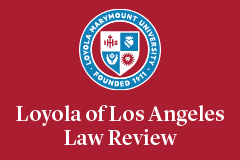Abstract
The federal judiciary’s application of Section 1 of the Sherman Antitrust Act to horizontal restraints remains one of the least defined areas of antitrust jurisprudence. Part of this problem stems from the Supreme Court’s failure to articulate clear guidelines since shifting from the widely used per se standard to the more comprehensive rule of reason and quick look approaches. Additionally, because the rule of reason analysis—the predominant standard used by federal courts today—places great emphasis on a defendant’s market power, the costs and burdens make it difficult for the plaintiffs to prove Section 1 violations.
This Article surveys recent lower federal court decisions to see how courts today analyze Section 1 claims, demonstrating that while considerable confusion still exists in the application of the per se, rule of reason, and quick look approaches to horizontal restraints, a small number of federal courts are beginning to apply these approaches with greater clarity. This Article also argues that the quick look approach should be abandoned because the per se approach and the rule of reason already provide sufficient means for analyzing horizontal restraints. Finally, this Article offers suggestions that shift the rule of reason analysis away from relying heavily on a defendant’s market power to determine whether a horizontal restraint violates Section 1.
Recommended Citation
Allen G. Haroutounian,
Shedding Light on the Federal Courts' Treatment of Horizontal Restraints Under Section 1 of the Sherman Antitrust Act,
45 Loy. L.A. L. Rev. 1173
(2012).
Available at: https://digitalcommons.lmu.edu/llr/vol45/iss4/4


